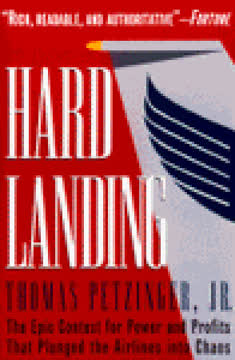Key Takeaways
1. Airline deregulation transformed the industry, creating winners and losers
"Deregulation had to happen. Government protection had its place in helping to establish the modern airline industry; certainly this protection fostered the technical development of the industry, particularly the birth of the jet age. But by the 1970s, if not sooner, airline regulation was as unnatural and anachronistic as Prohibition had been in the 1920s and poll taxes in the 1960s"
Watershed moment. The Airline Deregulation Act of 1978 marked a seismic shift in the industry. It removed government control over routes, fares, and market entry, allowing airlines to compete freely for the first time. This led to:
- Increased competition and lower fares
- Expansion of hub-and-spoke networks
- Emergence of new low-cost carriers
- Consolidation through mergers and bankruptcies
Winners and losers. Deregulation created opportunities for innovative airlines like Southwest and People Express, which thrived with low-cost models. However, it also put immense pressure on established carriers, leading to bankruptcies (e.g., Braniff, Eastern) and forcing painful cost-cutting measures.
2. Visionary leaders like Lorenzo and Crandall shaped modern air travel
"Lorenzo and Carney had turned themselves into two of the most important figures in commercial aviation, in the process transforming Texas International from a marginal, money-losing regional carrier into one of the most profitable airlines in the country."
Frank Lorenzo emerged as a controversial figure, known for:
- Aggressive cost-cutting and labor confrontations
- Pioneering use of bankruptcy to restructure airlines (Continental)
- Building a multi-airline empire (Texas Air Corporation)
Robert Crandall at American Airlines:
- Implemented innovative marketing strategies (AAdvantage frequent flyer program)
- Developed the SABRE computer reservation system
- Introduced yield management and "Super Saver" fares
Both leaders were instrumental in shaping industry practices, though their methods often put them at odds with labor unions and competitors.
3. Computer reservation systems became powerful competitive tools
"American accomplished this feat through a practice that Crandall's people called 'screen science.'"
Competitive advantage. Systems like American's SABRE and United's Apollo revolutionized airline distribution:
- Allowed real-time booking and inventory management
- Provided valuable market data to airlines
- Became profit centers through fees charged to other airlines
Controversy. The systems were accused of bias:
- Favoring the owning airline's flights in display order
- Manipulating fare displays to disadvantage competitors
- Leading to antitrust scrutiny and eventual regulation
The systems transformed travel agency operations and became critical to airlines' marketing and revenue management strategies.
4. Labor relations and union negotiations were critical battlegrounds
"Crandall christened his newfound strategy with the pretentious name 'the Growth Plan,' although there was no disputing that the plan was something extraordinary."
Cost pressures. Post-deregulation competition intensified the need to control labor costs:
- American's two-tier wage system ("B-scale")
- Continental's use of bankruptcy to void union contracts
- United's contentious negotiations with pilots
Union responses:
- Strikes and work actions
- Political lobbying for labor protections
- Resistance to two-tier wage systems and outsourcing
Labor relations became increasingly adversarial, with airlines seeking concessions to remain competitive and unions fighting to preserve wages and work rules.
5. Bankruptcies and mergers reshaped the competitive landscape
"Lorenzo had purchased just enough stock, 50.9 percent, to assume majority control of Continental. He named himself and two others to the company's board of directors."
Strategic bankruptcies:
- Continental's 1983 filing to void union contracts
- Eastern's 1989 filing amid labor disputes
Major mergers:
- Northwest and Republic (1986)
- TWA's acquisition by American (2001)
- Delta-Northwest merger (2008)
These restructurings allowed airlines to shed debt, renegotiate labor contracts, and consolidate routes and assets. The industry became increasingly concentrated, with a few large carriers dominating the market.
6. Low-cost carriers disrupted traditional airline business models
"Southwest promoted itself as the way to 'fly smart,' taking some inspiration from the Volkswagen as the car with cachet."
Southwest Airlines pioneered the low-cost model:
- Point-to-point routes instead of hub-and-spoke
- Single aircraft type (Boeing 737) for efficiency
- Quick turnarounds and high aircraft utilization
- No-frills service to keep costs down
Other disruptors:
- People Express (ultra-low fares, but short-lived success)
- JetBlue (low costs with upscale amenities)
- Spirit and Frontier (ultra-low-cost model)
These carriers forced legacy airlines to adapt, leading to the creation of low-cost subsidiaries (e.g., United's Ted, Delta's Song) and more competitive pricing on overlapping routes.
7. Hub-and-spoke networks emerged as a dominant strategy
"As he had demonstrated back at Braniff, Acker was incapable of small-scale management. He began picking up used jets all over North America, tapping some of his oldest and best connections for financing."
Network efficiency. Hub-and-spoke systems allowed airlines to:
- Serve more city pairs with fewer aircraft
- Increase load factors through connecting traffic
- Dominate key airports for competitive advantage
Major hubs:
- American: Dallas/Fort Worth, Chicago O'Hare
- United: Chicago O'Hare, Denver
- Delta: Atlanta, Salt Lake City
The strategy led to intense competition for airport slots and gates at major hubs, with airlines often paying premium prices to secure these valuable assets.
8. Safety and pilot training remained paramount amid industry changes
"Safety," Lindbergh learned, "lay in speed."
Technological advancements:
- Introduction of jet aircraft in commercial service
- Development of autopilot and flight management systems
- Improved weather radar and navigation tools
Regulatory oversight:
- FAA's role in setting and enforcing safety standards
- NTSB investigations of accidents and incidents
- Implementation of Crew Resource Management (CRM) training
Despite cost pressures and operational changes, the industry maintained a strong focus on safety. Training programs evolved to address human factors and improve cockpit communication, contributing to a steady improvement in aviation safety records.
Last updated:
FAQ
What’s Hard Landing: The Epic Contest for Power and Profits That Plunged the Airlines into Chaos by Thomas Petzinger Jr. about?
- Comprehensive airline industry history: The book chronicles the transformation of the U.S. airline industry from the era of government regulation through deregulation and into the early 1990s, focusing on the chaos, competition, and power struggles that ensued.
- Focus on key players: It profiles influential executives, labor leaders, and airlines, revealing how their ambitions, rivalries, and decisions shaped the industry’s fate.
- Themes of deregulation and upheaval: The narrative explores how deregulation led to intense competition, fare wars, labor conflicts, and the rise and fall of both legacy and low-cost carriers.
- Human drama and business strategy: The book combines vivid storytelling with deep analysis of corporate strategy, labor relations, and the broader economic and social impacts of airline industry changes.
Why should I read Hard Landing by Thomas Petzinger Jr.?
- Engaging, novelistic storytelling: The book reads like a corporate thriller, filled with reconstructed conversations and dramatic boardroom battles, making complex business history accessible and entertaining.
- Insider perspective on business: Readers gain a rare, detailed look at the inner workings of major airlines, including leadership decisions, labor negotiations, and technological innovations.
- Lessons for modern business: The book’s exploration of competition, innovation, and labor relations offers valuable insights for business professionals, students, and anyone interested in how industries adapt to disruption.
- Historical context for aviation: Understanding the events and personalities chronicled in the book provides essential background for today’s airline industry structure and challenges.
What are the key takeaways from Hard Landing by Thomas Petzinger Jr.?
- Deregulation’s double-edged sword: Deregulation was inevitable and led to massive redistribution of wealth, intense competition, and the collapse or transformation of many airlines.
- Human cost of competition: The book highlights the toll on employees, unions, and executives, showing how labor conflicts and cost-cutting shaped the industry’s evolution.
- Technology as a competitive weapon: Computer reservation systems and yield management revolutionized airline marketing and pricing, becoming as important as the planes themselves.
- Industry bifurcation: The market ultimately split between network carriers focused on service and convenience, and low-cost carriers targeting price-sensitive travelers.
Who are the main airline executives and labor leaders featured in Hard Landing by Thomas Petzinger Jr., and what roles did they play?
- Frank Lorenzo: Known for his ruthless cost-cutting and use of bankruptcy to break unions, Lorenzo built an airline empire through aggressive takeovers and labor battles.
- Bob Crandall: The strategic mastermind behind American Airlines, Crandall pioneered yield management, computer reservation system dominance, and innovative pricing strategies.
- Herb Kelleher: Southwest Airlines’ co-founder, Kelleher revolutionized the industry with a low-cost, employee-centric model and a unique, fun corporate culture.
- Stephen Wolf and Sir Colin Marshall: Wolf led United’s global expansion and labor battles, while Marshall transformed British Airways through privatization, service innovation, and international alliances.
- Union leaders like Charlie Bryan and Rick Dubinsky: These figures led fierce resistance against management’s cost-cutting, strikes, and employee ownership efforts, shaping the labor-management dynamic.
How did deregulation reshape the U.S. airline industry according to Hard Landing by Thomas Petzinger Jr.?
- Unleashed competition and chaos: Deregulation removed government controls over routes and fares, leading to fare wars, new entrants, and the collapse of inefficient carriers.
- Redistribution of wealth: Rather than creating new wealth, deregulation shifted trillions of dollars among airlines, employees, and consumers, creating winners and losers.
- Rise of low-cost carriers: Deregulation enabled the emergence of airlines like Southwest and People Express, which challenged legacy carriers with innovative business models.
- Labor and management upheaval: The new environment forced airlines to confront high labor costs, sparking strikes, wage concessions, and the introduction of two-tier wage systems.
What role did labor relations and unions play in the airline industry’s turmoil as described in Hard Landing by Thomas Petzinger Jr.?
- Labor as a critical cost: With labor accounting for up to 40% of expenses, controlling wages became central to airline survival post-deregulation.
- Strikes and resistance: Unions fiercely opposed wage cuts and two-tier pay scales, leading to high-profile strikes at United, Eastern, and Continental.
- Management’s aggressive tactics: Executives used bankruptcy, strikebreakers, and legal maneuvers to impose cost reductions, often fracturing union solidarity.
- Employee ownership attempts: Efforts like United’s ESOP plan highlighted the challenges of aligning labor and management interests in a volatile industry.
How did technology, especially computer reservation systems and yield management, impact the airline industry in Hard Landing by Thomas Petzinger Jr.?
- Reservation systems as power tools: Systems like Sabre (American), Apollo (United), and System One (Eastern) allowed airlines to control travel agent bookings and market share.
- Screen science and manipulation: Airlines programmed their systems to favor their own flights, sometimes corrupting algorithms to disadvantage competitors, prompting regulatory scrutiny.
- Yield management innovation: Bob Crandall’s development of yield management enabled airlines to maximize revenue by dynamically pricing seats based on demand and booking patterns.
- Revenue and competition: These technologies became lucrative revenue streams and critical competitive weapons, shaping the industry’s marketing and pricing strategies.
What were the major mergers, acquisitions, and bankruptcies in the airline industry as detailed in Hard Landing by Thomas Petzinger Jr.?
- Wave of consolidation: The 1980s and early 1990s saw a flurry of mergers, including Texas Air’s acquisition of Continental, Eastern, People Express, and Frontier.
- Operational chaos: Merging airlines with different fleets, cultures, and labor contracts led to service breakdowns, scheduling nightmares, and employee dissatisfaction.
- Bankruptcy as a strategy: Executives like Frank Lorenzo used Chapter 11 bankruptcy to void labor contracts and restructure costs, setting industry precedents.
- Market concentration: By the end of the period, a handful of large carriers dominated U.S. air travel, stabilizing finances but reducing competition.
How did low-cost carriers like Southwest Airlines disrupt the industry, according to Hard Landing by Thomas Petzinger Jr.?
- Innovative business model: Southwest pioneered point-to-point routes, a single aircraft type, quick turnarounds, and simple, low fares, avoiding the complexity of hub-and-spoke systems.
- Unique corporate culture: Herb Kelleher fostered an employee-centric, fun, and loyal workforce, emphasizing customer service and operational efficiency.
- Competitive pressure: Southwest’s entry into new markets forced legacy carriers to cut fares and rethink strategies, leading to the “Southwest effect” of lower prices and increased competition.
- Inspiration for imitators: Southwest’s success inspired a new generation of low-cost startups, fundamentally transforming the industry’s structure.
What were the most significant labor-management conflicts and strikes described in Hard Landing by Thomas Petzinger Jr.?
- United’s 1985 pilot strike: Pilots resisted management’s push for two-tier wages, leading to a crippling strike that damaged United’s finances and morale.
- Continental’s bankruptcy and strikebreaking: Frank Lorenzo’s use of bankruptcy to impose wage cuts and hire strikebreakers set a controversial industry precedent.
- American’s 1993 flight attendants’ strike: This high-profile conflict highlighted the ongoing tension between cost control and employee rights.
- Impact on safety and morale: Prolonged disputes led to absenteeism, stress, and concerns about operational safety, affecting both employees and passengers.
How did international aviation politics and treaties, such as Bermuda II, affect U.S. airlines in Hard Landing by Thomas Petzinger Jr.?
- Heathrow access restrictions: The Bermuda II treaty limited U.S. carrier access to London Heathrow, granting slots only to Pan Am, TWA, or their “corporate successors.”
- Diplomatic negotiations: U.S. and British governments engaged in protracted talks over slot allocations, code-sharing, and corporate succession, affecting mergers and market entry.
- British Airways’ dominance: Sir Colin Marshall leveraged British Airways’ control of Heathrow slots and government support to maintain a competitive edge and block rivals.
- Impact on Pan Am and TWA: These restrictions contributed to Pan Am’s bankruptcy and complicated TWA’s restructuring, illustrating the intersection of diplomacy and commercial interests.
What are the best quotes from Hard Landing by Thomas Petzinger Jr. and what do they mean?
- “This is a nasty, rotten business.” —Robert Crandall: Captures the brutal, high-stakes, and unforgiving nature of the airline industry, where competition is relentless and margins are thin.
- “Be ruthless. Be driven. Don’t let anything get in your way.” —Bob Crandall: Reflects the aggressive, survivalist mindset required of airline executives during the deregulation era.
- “A wink, a single gesture, is enough to topple you from the tightrope.” —Antoine de Saint-Exupéry: Symbolizes the precarious balance airlines must maintain between safety, efficiency, and profitability.
- “The game we are playing is closest to the old game of Christians and lions.” —Bob Crandall: Vividly illustrates the existential, winner-take-all competition that defined the post-deregulation airline industry.
Review Summary
Hard Landing is a comprehensive history of the American airline industry, focusing on the period from deregulation in 1978 through the 1990s. Readers praise Petzinger's engaging storytelling and detailed accounts of industry personalities, corporate strategies, and labor disputes. The book offers insights into airline economics, technological innovations, and the challenges of running an airline. While some find it overly focused on certain individuals or labor issues, most reviewers appreciate the book's depth and its ability to bring the complex world of commercial aviation to life.
Similar Books
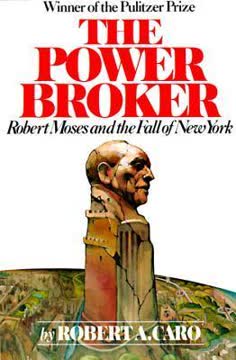
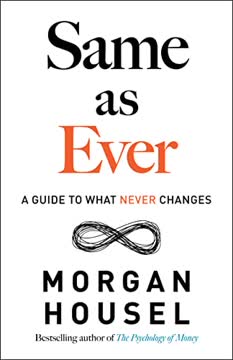

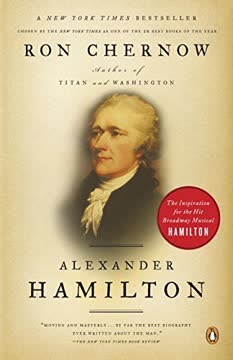
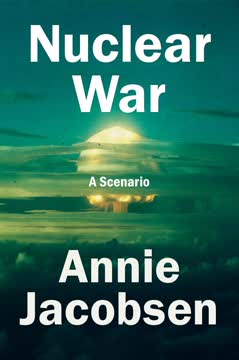
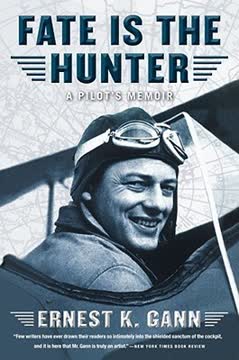
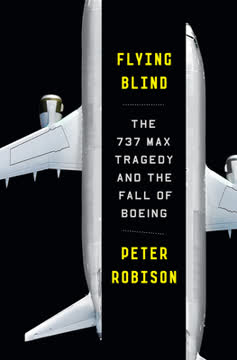

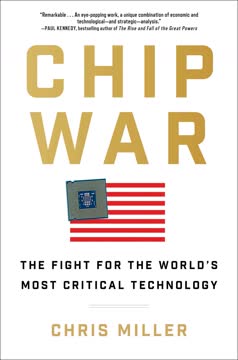
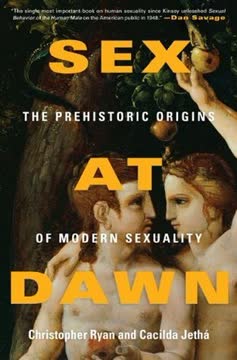
Download PDF
Download EPUB
.epub digital book format is ideal for reading ebooks on phones, tablets, and e-readers.
